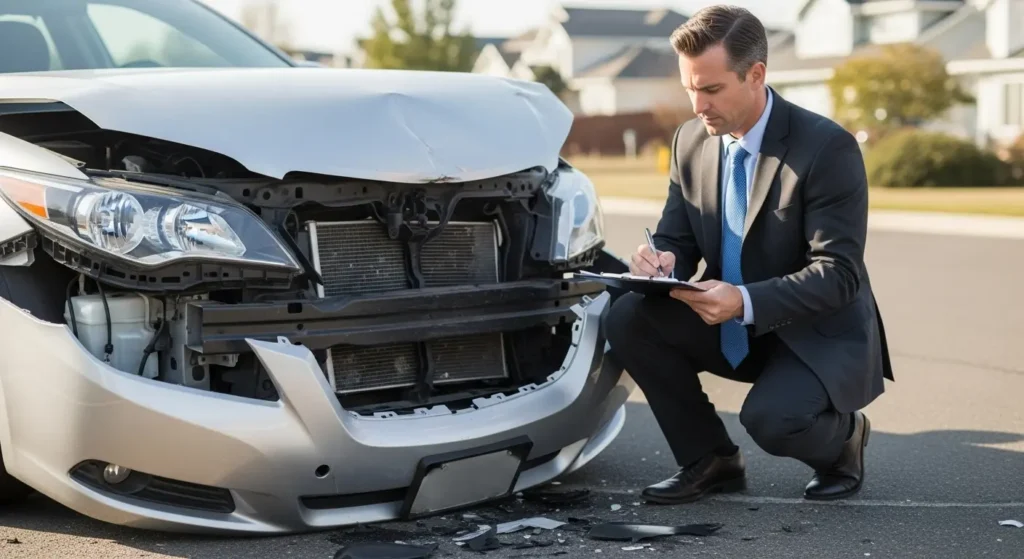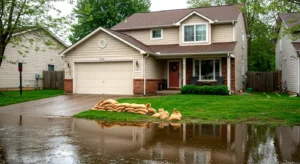.
Your Roadmap to Stress-Free Recovery After a Florida Accident
Driving in Florida, especially through the bustling highways of Central Florida like I-4 or the major arteries around Orlando and Tampa, is an everyday reality for millions. While the sun shines brightly, the statistics show that accidents are unfortunately common. When the unexpected happens—a fender-bender, a rear-end collision, or something more serious—your immediate safety is paramount. But what comes next?
The period following a car accident can be overwhelming. You’re dealing with shock, potential injuries, and the sudden disruption of your daily life. The last thing you need is a confusing, drawn-out battle with insurance companies.
As a digitally native insurance company built for your generation, Poncho Insurance believes the claims process shouldn’t add to your stress. It should be a clear, simple path to recovery. This comprehensive guide provides a step-by-step roadmap for navigating auto insurance claims in Florida, ensuring you understand your rights, responsibilities, and how to protect your interests from the moment of impact until your car is repaired and the claim is closed.
Phase 1: Immediate Actions at the Scene (Safety and Documentation)
The first few minutes after an accident are crucial. Your actions here will lay the groundwork for the entire claim process.
Step 1: Prioritize Safety
- Stop and Check: Immediately stop your vehicle. Turn on your hazard lights. Check yourself and your passengers for injuries. If anyone is injured, call 911 immediately.
- Move to Safety: If possible and safe to do so, move your vehicle out of the flow of traffic to the side of the road or shoulder. If the vehicles are immobilized or if moving them is unsafe (like on a narrow bridge), leave them in place and warn approaching traffic.
- Do NOT Admit Fault: Be helpful and courteous, but do not apologize or speculate on who was to blame. Stick strictly to the facts of the event when speaking to anyone.
Step 2: Contact the Authorities
Call the police or the Florida Highway Patrol (FHP), especially if there are injuries, significant property damage, or if the other driver is uncooperative. Even for minor accidents, a formal police report provides an official, third-party record of the incident. This report will be a vital document for your insurance claim. Ensure you get the police report number and the name of the responding officer.
Step 3: Collect Comprehensive Information
This is the most critical documentation step. Use your phone to capture everything immediately:
- The Other Driver(s): Get their full name, phone number, address, and driver’s license number.
- The Vehicle(s): Get the license plate number, year, make, and model.
- Insurance Information: Collect the name of the other driver’s insurance company and the policy number.
- Witnesses: Ask any witnesses for their names and contact information. Their impartial testimony can be invaluable.
- Photos/Videos: Take detailed, wide-angle photos and close-ups. Photograph the damage to all vehicles, the positioning of the vehicles, any skid marks, traffic signs, and any injuries. Document the road conditions and the time of day.
Phase 2: Filing the Claim (Activating Your Coverage)
Once you are safe and have left the scene, the formal process of filing your claim begins.
Step 4: Notify Poncho Insurance Immediately
Contact Poncho Insurance as soon as possible. Delaying the claim notification can complicate the investigation process. Since Poncho is your insurance provider, you will initiate a First-Party Claim.
Provide the claims representative with all the documentation you collected at the scene, including the police report number. The representative will open a claim file and assign you a Claims Adjuster. This adjuster is your primary point of contact for the duration of the claim.
Step 5: Understanding Florida’s PIP (Personal Injury Protection)
This step is critical for all Florida drivers. Florida is a No-Fault state. This means that regardless of who caused the accident, your own insurance company (through your Personal Injury Protection, or PIP coverage) pays for your medical expenses and lost wages up to your policy limit, typically $10,000.
- The 14-Day Rule: To qualify for your full $10,000 in PIP benefits, you must seek medical treatment within 14 days of the accident. Missing this deadline can severely limit the benefits you receive.
- PIP is Not Liability: Remember, PIP covers you and your passengers, not the damage or injuries you cause to others. That is covered by your Bodily Injury Liability (BIL) and Property Damage Liability (PDL) coverages.
Step 6: Damage Assessment and Repair
The claims adjuster will manage the process of assessing the physical damage to your vehicle.
- Inspection: You will be asked to take your vehicle to an approved inspection site, a body shop in the Poncho network, or in some cases, a mobile adjuster may come to you.
- Estimate: The body shop or adjuster will prepare an estimate of the repair costs.
- Total Loss Determination: If the cost to repair the vehicle exceeds a certain percentage (often 70% to 80%) of its Actual Cash Value (ACV), the vehicle will be declared a Total Loss. If this happens, the adjuster will offer you a settlement for the ACV of the car, minus your deductible (if applicable). Understanding the ACV—what your car was worth right before the accident—is key to agreeing to a settlement.

Phase 3: The Investigation and Resolution (Liability and Payment)
This phase determines who was at fault and how the payments for all damages (beyond your PIP and physical damage deductible) will be managed.
Step 7: Liability Determination
The adjuster will investigate the facts—reviewing the police report, witness statements, and photos—to determine who was legally at fault for the accident.
- Florida’s Comparative Negligence: Florida uses a “pure comparative negligence” standard. This means fault can be shared between drivers. For example, if you are deemed 20% at fault and the other driver is 80% at fault, the other driver’s insurance company will only be responsible for 80% of your damages, and your recovery will be reduced by your 20% share.
- Third-Party Claims: If the other driver is determined to be at fault, your damages (beyond what your PIP covers) will be filed as a Third-Party Claim against their insurance company. Your Poncho Insurance representative can guide you through this interaction.
Step 8: Managing Deductibles and Payment
- Collision Coverage: If you use your own Collision Coverage to pay for your repairs (the fastest route), you must pay your deductible first. If the other driver is later found fully at fault, Poncho Insurance will attempt to recover the cost of the repairs and your deductible from the other driver’s insurer through Subrogation. If successful, your deductible is returned to you.
- Uninsured/Underinsured Motorist (UM): Unfortunately, Florida has a high number of uninsured drivers. If the at-fault driver has no insurance or insufficient insurance, your optional UM coverage will step in to cover your medical expenses, lost wages, and pain and suffering beyond what your PIP covers. This is why UM is a highly recommended coverage in Florida.
Step 9: Review and Close the Claim
Before you accept any final settlement or sign a release form, ensure that all damage has been fully assessed, that you have completed all necessary medical treatments, and that you understand the terms of the agreement.
Once the claim is closed, you will typically sign a release agreeing not to pursue further legal action against the at-fault party for the damages incurred in that specific accident.
Phase 4: Post-Claim Realities
Two major concerns follow an accident: the potential increase in your premium and the future of your coverage.
- Rate Impact: Not every accident causes your premium to rise. Minor incidents, particularly those where you were not found at fault (or where only your Comprehensive coverage was used, like a falling tree branch), often have minimal impact. However, at-fault accidents, especially those involving significant payouts or multiple claims, are likely to result in a premium increase upon renewal.
- The Claims History: Every claim is logged in a central industry database (CLUE report) and stays on your record for several years. Insurance companies review this history when issuing new policies or renewals.
Poncho Insurance: Simplifying the Claims Process for Floridians
At Poncho Insurance, we understand that our customers—digital natives and modern Floridians—expect efficiency, transparency, and minimal hassle. The complexities of Florida’s no-fault law, the prevalence of UM issues, and the need for fast, reliable service are why we designed our claims process with you in mind.
We recognize that after an accident on a busy Orlando road or a freeway near a major destination, you need help, not headaches.
Our Commitment to a Stress-Free Claim:
- Digital-First Reporting: You can initiate your claim anytime through our mobile app or website, allowing you to upload photos and police reports instantly from the scene, minimizing delays.
- Dedicated Local Support: While our tools are digital, our support is personal. Your Poncho claims adjuster is familiar with the specifics of Florida law, including the critical 14-day PIP window and the process of comparative negligence. They guide you through the intricacies of PIP, liability, and subrogation.
- Efficient Repair Network: We utilize a vetted network of quality repair shops in Central Florida and statewide, ensuring fast, reliable repairs that meet our standards. We strive to expedite the inspection process, often using mobile or digital tools to get the estimate approved quickly.
- Transparency on Deductibles and Rates: We provide clear communication on your deductible repayment status during the subrogation process and offer transparent answers regarding how the claim may impact your future premium, ensuring you have no surprises.
An auto accident is stressful enough. Let Poncho Insurance handle the insurance process simply, reliably, and efficiently, getting you back on the road and back to your life as quickly as possible.
Need to file a claim or curious about UM coverage in your area? Contact Poncho Insurance today—we make insurance make sense.




